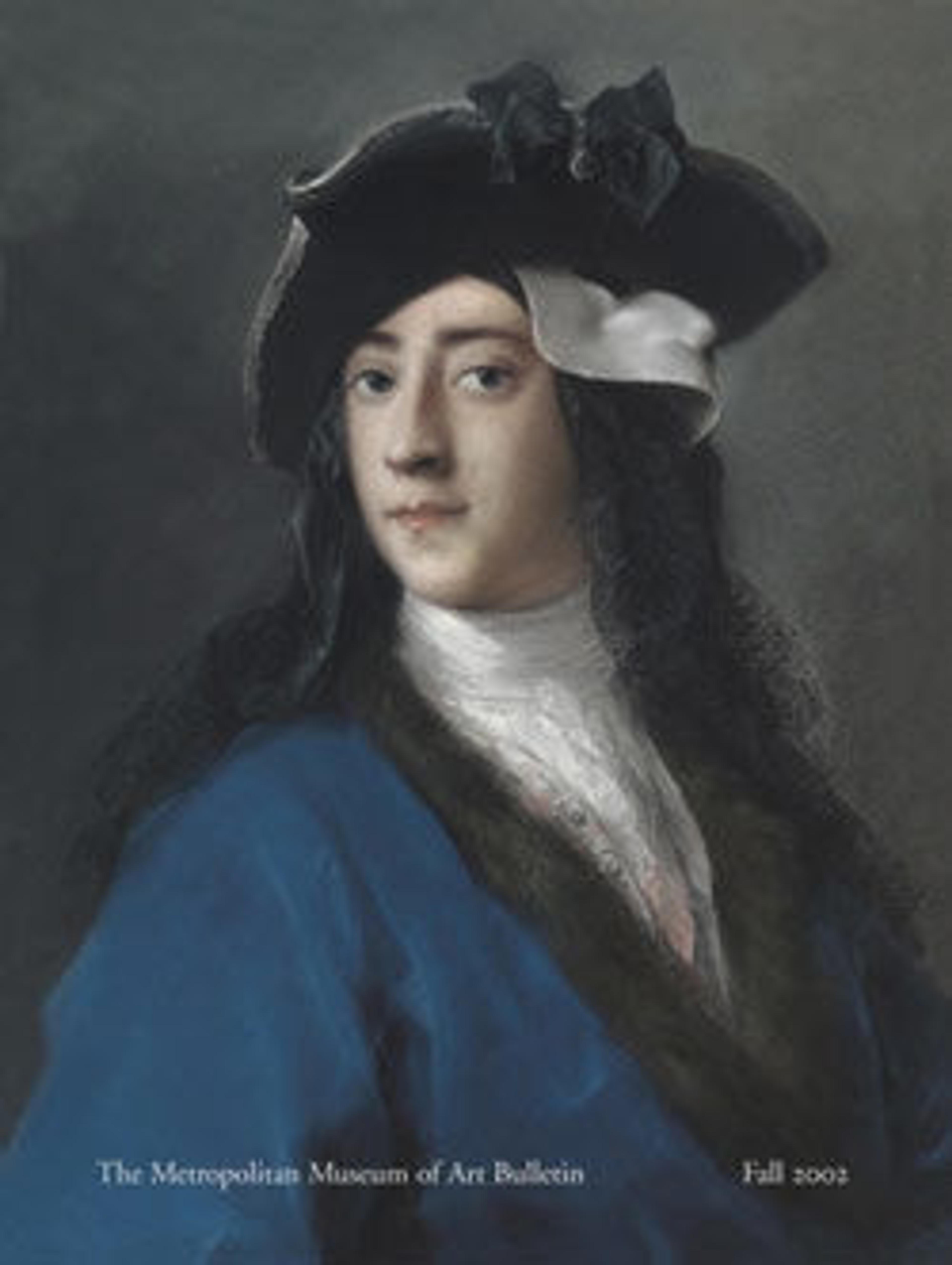Mounted Hussar
Meissonier's Friedland, 1807 (acc. no. 87.20.11), a broad canvas celebrating a Napoleonic victory as envisioned by a firm adherent of the Second Empire, is arguably the most important academic painting of the second half of the nineteenth century in the Museum's collection. Begun in the mid-1850s, it was completed only in 1875. One reason for the long delay was Meissonier's extraordinary preparatory research. The work was preceded by many drawings, oil sketches, and, for the primary horsemen, several wax models, of which this may be the only one to survive. The medium is perishable by nature. A wire armature was affixed to a small piece of wood, and warm pellets of wax were pressed onto it to form the figures. In a photo of Meissonier's atelier, this very model is clamped to his modeling stand. He could thus view it from any angle and sketch from it. That our hussar and his mount appear to the left and more frontally positioned in Meissonier's grandly orchestrated chef d'oeuvre contributes to the overall photo- graphic semblance of frozen movement
Artwork Details
- Title:Mounted Hussar
- Modeler:Ernest Meissonier (French, Lyons 1815–1891 Paris)
- Date:1866–75
- Culture:French
- Medium:Red wax, wood, metal, leather and cord
- Dimensions:Overall (confirmed): 8 5/8 × 8 1/4 × 3 in. (21.9 × 21 × 7.6 cm)
- Classification:Sculpture
- Credit Line:Purchase, Iris and B. Gerald Cantor Foundation Gift, in celebration of its 25th Anniversary, 2002
- Object Number:2002.272
- Curatorial Department: European Sculpture and Decorative Arts
More Artwork
Research Resources
The Met provides unparalleled resources for research and welcomes an international community of students and scholars. The Met's Open Access API is where creators and researchers can connect to the The Met collection. Open Access data and public domain images are available for unrestricted commercial and noncommercial use without permission or fee.
To request images under copyright and other restrictions, please use this Image Request form.
Feedback
We continue to research and examine historical and cultural context for objects in The Met collection. If you have comments or questions about this object record, please contact us using the form below. The Museum looks forward to receiving your comments.
